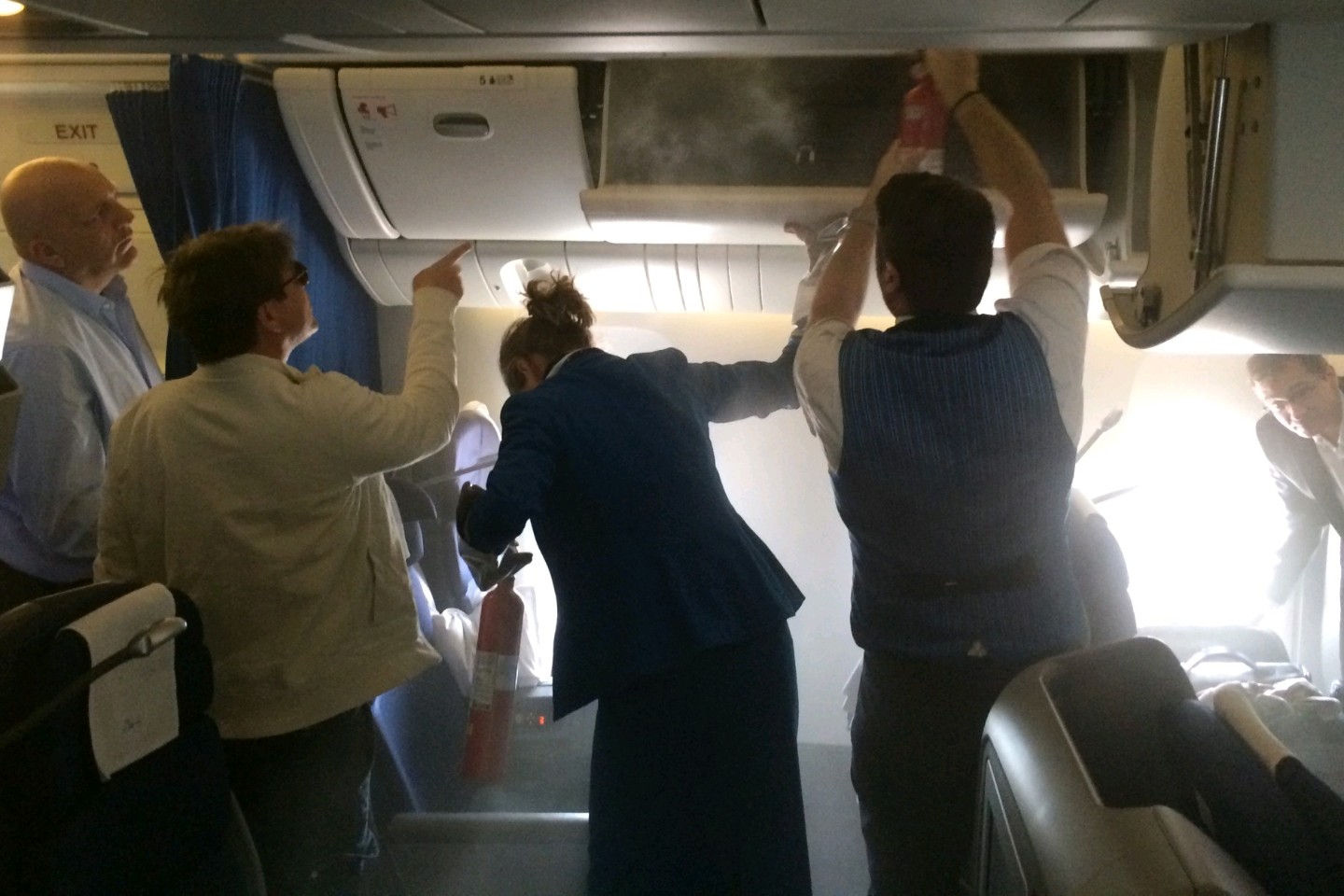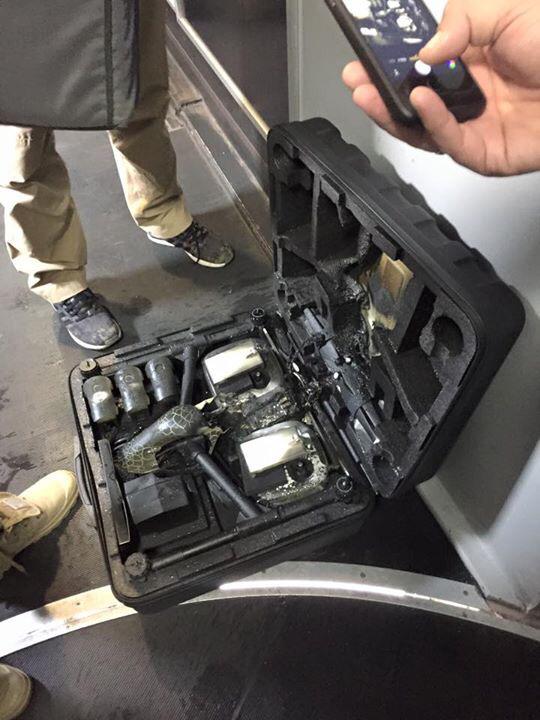seattle_helo
Member
Guys, I think most of us traveling on airplanes with LiPo's understand how critical it is to pack them properly and treat them carefully. Here's a great reminder that was posted online yesterday:

Apparently this was the scene on a KLM flight where a Dutch TV producer had stowed a DJI Inspire kit in the overhead compartment (the correct place to transport LiPo batts, btw). But in this case they were not stored properly and somehow a short or fault developed. A very bad scenario on an airplane. This could have been a lot worse but luckily the damage was mostly contained to the Inspire case:

Bottom line, for the sake of us all, PLEASE pack your LiPo's properly and take care that they can't become shorted in flight. Use terminal caps or tape to cover the connectors and contacts. Pack them so that they are protected and safe from being pinched or knocked into each other. Pay attention to the fundamentals. This is one of those things where I feel like I'm preaching to the choir but it's just so critical that it bears emphasizing. Please be careful.
nick

Apparently this was the scene on a KLM flight where a Dutch TV producer had stowed a DJI Inspire kit in the overhead compartment (the correct place to transport LiPo batts, btw). But in this case they were not stored properly and somehow a short or fault developed. A very bad scenario on an airplane. This could have been a lot worse but luckily the damage was mostly contained to the Inspire case:

Bottom line, for the sake of us all, PLEASE pack your LiPo's properly and take care that they can't become shorted in flight. Use terminal caps or tape to cover the connectors and contacts. Pack them so that they are protected and safe from being pinched or knocked into each other. Pay attention to the fundamentals. This is one of those things where I feel like I'm preaching to the choir but it's just so critical that it bears emphasizing. Please be careful.
nick
